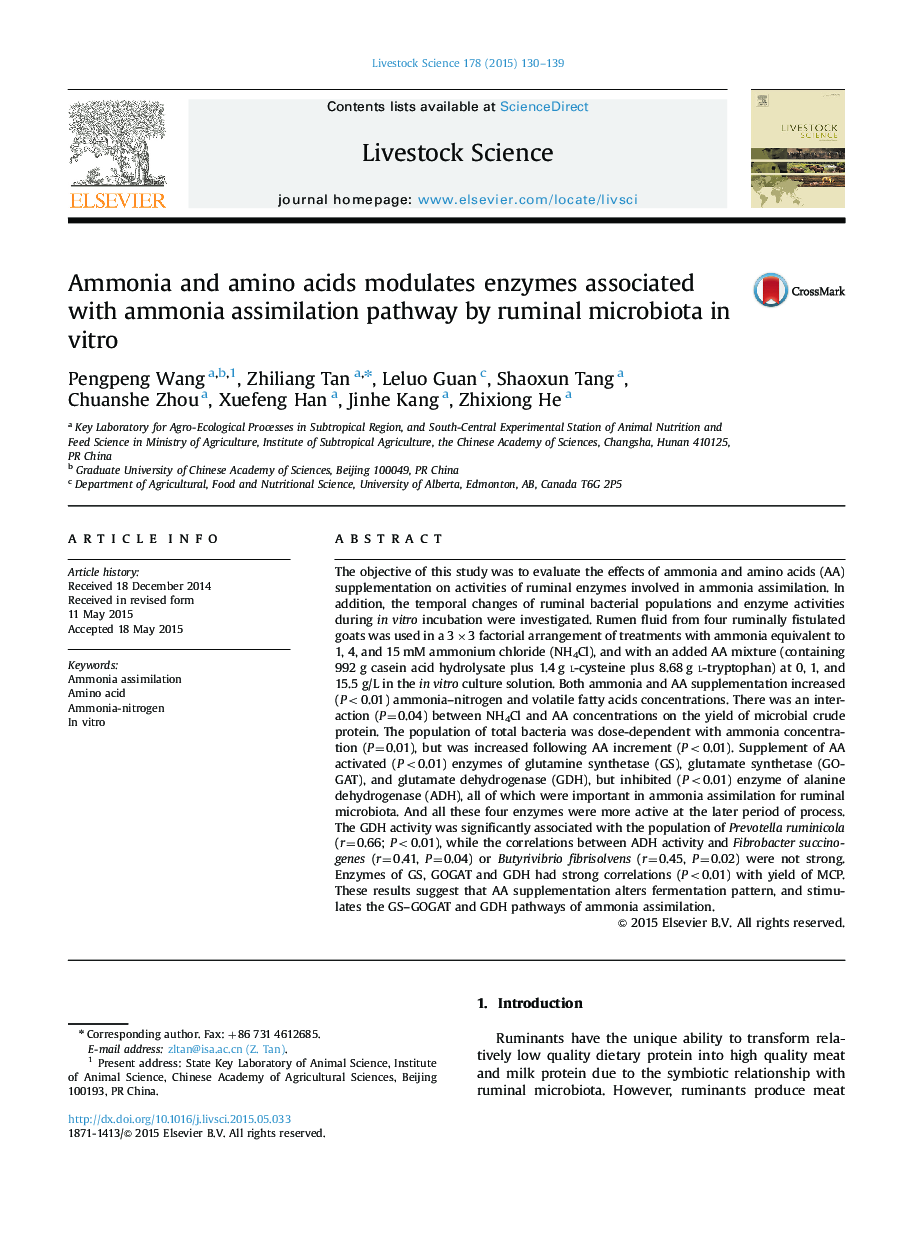| Article ID | Journal | Published Year | Pages | File Type |
|---|---|---|---|---|
| 2447069 | Livestock Science | 2015 | 10 Pages |
•We tried to explain effects of ammonia and amino acids on ruminal pattern.•We determined the diversity and quantities of ruminal bacteria which affected by ammonia and amino acids supplementation.•Enzyme activities involved in ammonia assimilation can be affected by ammonia and amino acids supplementation.•Enzymes of GS, GOGAT and GDH are strongly correlated with yield of microbial protein.
The objective of this study was to evaluate the effects of ammonia and amino acids (AA) supplementation on activities of ruminal enzymes involved in ammonia assimilation. In addition, the temporal changes of ruminal bacterial populations and enzyme activities during in vitro incubation were investigated. Rumen fluid from four ruminally fistulated goats was used in a 3×3 factorial arrangement of treatments with ammonia equivalent to 1, 4, and 15 mM ammonium chloride (NH4Cl), and with an added AA mixture (containing 992 g casein acid hydrolysate plus 1.4 g l-cysteine plus 8.68 g l-tryptophan) at 0, 1, and 15.5 g/L in the in vitro culture solution. Both ammonia and AA supplementation increased (P<0.01) ammonia–nitrogen and volatile fatty acids concentrations. There was an interaction (P=0.04) between NH4Cl and AA concentrations on the yield of microbial crude protein. The population of total bacteria was dose-dependent with ammonia concentration (P=0.01), but was increased following AA increment (P<0.01). Supplement of AA activated (P<0.01) enzymes of glutamine synthetase (GS), glutamate synthetase (GOGAT), and glutamate dehydrogenase (GDH), but inhibited (P<0.01) enzyme of alanine dehydrogenase (ADH), all of which were important in ammonia assimilation for ruminal microbiota. And all these four enzymes were more active at the later period of process. The GDH activity was significantly associated with the population of Prevotella ruminicola (r=0.66; P<0.01), while the correlations between ADH activity and Fibrobacter succinogenes (r=0.41, P=0.04) or Butyrivibrio fibrisolvens (r=0.45, P=0.02) were not strong. Enzymes of GS, GOGAT and GDH had strong correlations (P<0.01) with yield of MCP. These results suggest that AA supplementation alters fermentation pattern, and stimulates the GS–GOGAT and GDH pathways of ammonia assimilation.
